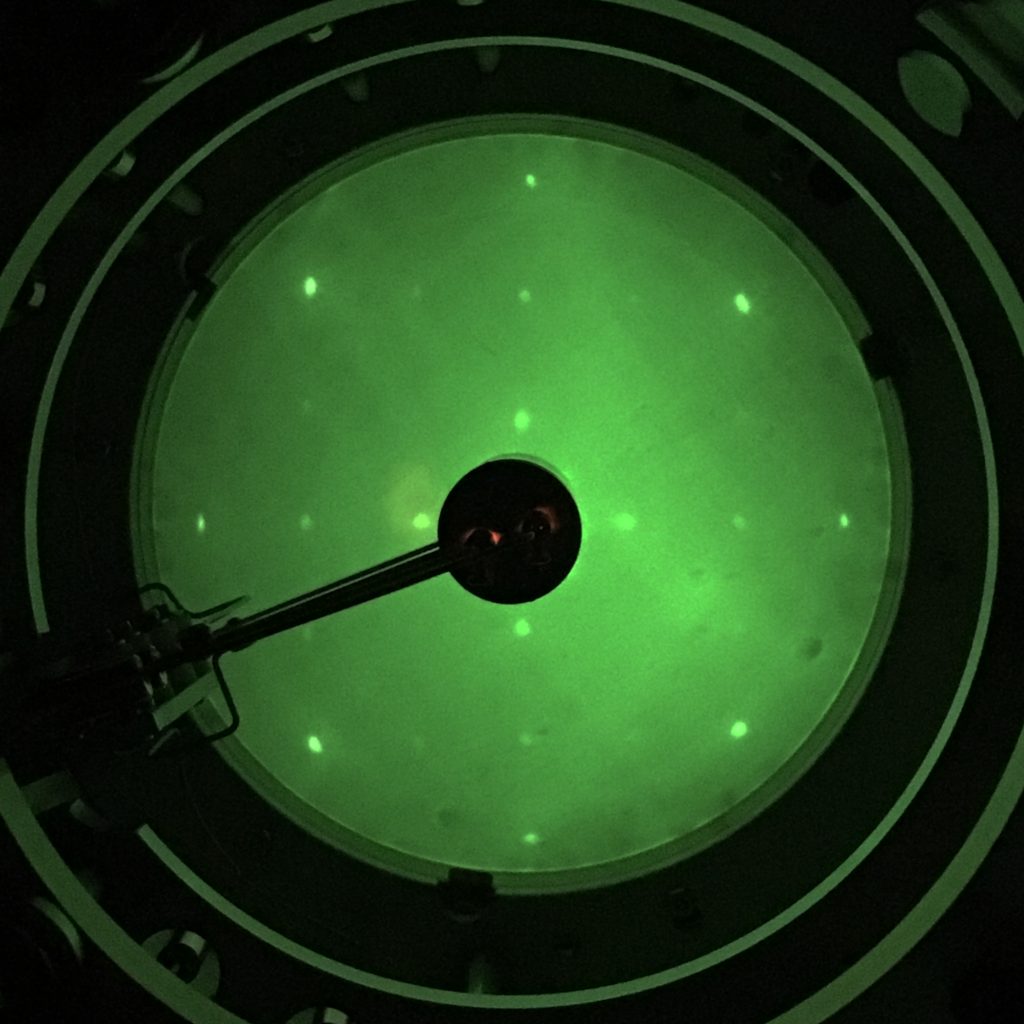This project focuses on chemical transformations and reactions on iron and oxide surfaces. We measure the fundamental surface chemical mechanisms and the restructuring of well-defined (single crystal) surfaces at the gas/solid interface. The initial stages of these reactions define the critical role the surface plays in heterogeneous catalytic and environmental processes. Model systems are studied at the gas/solid interface in UHV and near ambient pressures to bridge the pressure gap and answer key questions on the surface chemistry under controllable conditions.
We are also investigating environmental surface chemistry of emerging environmental pollutants, from disinfectants and their by-products in the water supply. Chlorinated disinfectants react with natural organic matter to produce chlorinated disinfectant byproducts (DBPs). Iron and other catalysts can react with disinfectants and their DBP’s. This project focuses on the reaction pathways to understand the role of iron surface chemistry in environmental reactions. We aim determine their reaction mechanism at the liquid/Fe and gas/Fe interface for mitigating issues with water quality.
Related Publications:
- de Alwis, C.; Perrine, K. A. Dechlorination of CDCl3 on Fe(111): Implications for disinfection by-product degradation. Surface Science 2023 (732), 122271. doi.org/10.1016/j.susc.2023.122271
- de Alwis, C.; Trought, M.; Crumlin, E.; Nemsak, S.; Perrine, K. A. Probing the initial stages of iron surface corrosion: Effect of O2 and H2O on surface carbonation. Applied Surface Science, 2023 (612),155596; published online Nov. 2022. doi.org/10.1016/j.apsusc.2022.155596
- Degaga, G.; Trought, M.; Nemsak, S.; Crumlin, E., Pandey, R.; Seel, M.; Perrine, K. A. Investigation of N2 Adsorption on Fe3O4(001) using Ambient Pressure Photoelectron Spectroscopy and Density Functional Theory. J. Chem. Phys., 2020 152, 054717. *special edition on Oxide Chemistry and Catalysis article (invited). **chosen as a feature article. doi.org/10.1063/1.5138941
